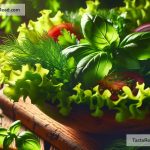Mastering the Art of Minimalistic Food Photography for Clean Aesthetics
In an era where every meal seems to end up on social media, minimalistic food photography has carved its niche, celebrating simplicity and the intrinsic beauty of food. Gone are the days of cluttered, overly-styled food shots – today, it’s all about clean aesthetics that allow the dish to speak for itself. If you’re eager to join this trend and create stunning, minimalistic food images, you’re in the right place. Let’s dive into some key strategies that will elevate your food photography game.
Focus on the Hero
In minimalistic food photography, the dish is the star. Start by choosing a subject that stands out on its own, without needing too many accessories or a complicated setup. It could be as simple as a freshly baked loaf of bread, a vibrant bowl of fruit, or an elegantly plated dessert. The key is choosing items with interesting textures, colors, or shapes that will draw the viewer’s eye.
Simplicity in Styling
Minimalism is all about less being more. When styling your food, resist the temptation to overcrowd the scene. Use just a couple of elements to complement the main subject without stealing its thunder. This could mean a simple garnish, a few crumbs to suggest freshness, or a single fork or spoon that implies the food is meant to be eaten. The idea is to create a context that enhances the dish, not distract from it.
Choose Your Background Wisely
The background is nearly as important as the food itself in minimalistic photography. Opt for neutral, uncluttered backgrounds that won’t compete with your subject for attention. Textured surfaces like wood, stone, or linen can add depth to your images without overwhelming them. Remember, the background should support and lift your subject, not overshadow it.
Let There Be Light
Good lighting is crucial in any form of photography, and minimalistic food photography is no exception. Natural light is your best friend here; it beautifully highlights the textures and colors of the food without the harshness that artificial lighting can sometimes bring. Whenever possible, shoot near a window where indirect sunlight will illuminate your dish. Play around with the direction and intensity of light to find the perfect shadow and highlight balance to make your food pop.
Composition and Framing
Effective composition can make or break a minimalistic food shot. Since there are fewer elements to work with, the placement of each component becomes vital. Experiment with different angles and distances. Sometimes, a close-up shot that captures the texture of your dish can be more impactful than a full-table setup. Likewise, the rule of thirds and negative space can be powerful tools in composition, guiding the viewer’s eye towards the subject in a pleasing, balanced way.
Post-Processing for Perfection
Even with careful planning and execution, most photos can benefit from a touch of post-processing. Keep adjustments minimal to preserve the natural beauty of your dish. Slight tweaks to brightness, contrast, and saturation can enhance your image without making it look over-edited. Remember, the goal is to maintain the authenticity and clean aesthetics of your original shot.
Practice, Practice, Practice
Finally, like any other skill, the art of minimalistic food photography improves with practice. Experiment with different dishes, backgrounds, lighting conditions, and compositions. Over time, you’ll develop an eye for what works and what doesn’t, refining your unique style along the way. Don’t be afraid to seek inspiration from others, but always aim to put your personal twist on things.
Conclusion
Minimalistic food photography is more than just a trend; it’s a celebration of simplicity, focusing on the natural beauty of food. By emphasizing the subject, practicing restraint in styling, choosing the right background, utilizing natural light, composing thoughtfully, and applying minimal post-processing, anyone can create stunning, clean-aesthetic food images. Whether you’re a hobbyist looking to share drool-worthy shots on Instagram or a professional aiming to add a fresh, minimalist edge to your portfolio, these tips will help you capture the essence of your dishes in every click. Happy shooting!


